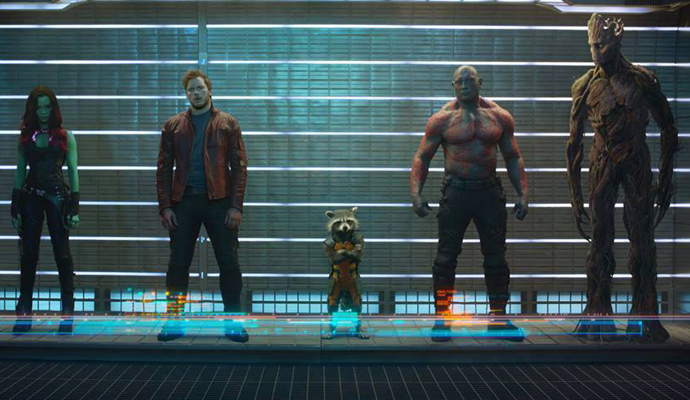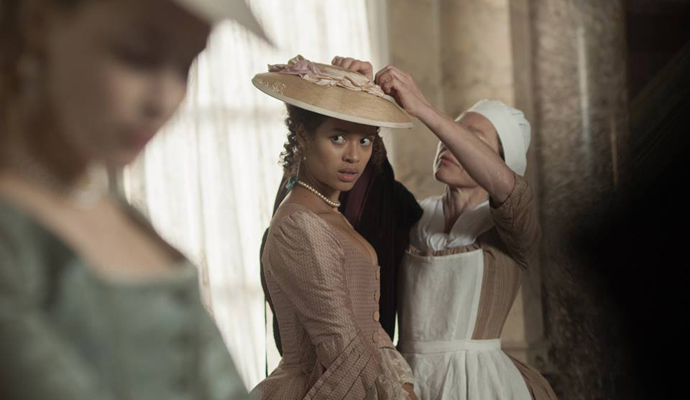Girls on Film: Why audiences are responsible for the future of cinema
It's easy to succumb to Hollywood's multimillion marketing campaigns — but cinephiles need to resist


Audiences need to stop settling for the movies playing at their local multiplex.
It's hard not to settle. The constant demands of technology mix with the demands of real life, leaving us with little time to explore less-traveled corners. There are countless movies, television shows, and other media vying for our attention. Only the loudest and most demanding manage to get it, and the rest gets shuffled off to a future that often never comes — a plan quickly forgotten and supplanted by the next attention-stealing event.
It's an understandable habit, but it makes us all a part of the problem. If cinema is ever going to truthfully reflect our diversity in race and gender — or even just embrace a different set of narrative structures and styles — audiences need to seek out and support the films that need the extra help most: lower-budget, lower-distribution films that offer what Hollywood's cookie-cutter blockbusters don't. We have to prove the worth of the world outside of big-budget franchises before they disappear and leave us with nothing but snarky space raccoons, cigar-smoking testosterone fests, and debauched vacations.
The Week
Escape your echo chamber. Get the facts behind the news, plus analysis from multiple perspectives.

Sign up for The Week's Free Newsletters
From our morning news briefing to a weekly Good News Newsletter, get the best of The Week delivered directly to your inbox.
From our morning news briefing to a weekly Good News Newsletter, get the best of The Week delivered directly to your inbox.
It wasn't always like this. At the turn of the millennium, X-Men ushered in our obsession with superheroes, but it was only the eighth most popular film of 2000, bested by dramas, family films, and even the rom-com What Women Want. Ten years earlier, the highest action-adventure was Teenage Mutant Ninja Turtles at five, bested by Pretty Woman, Dances with Wolves, Ghost, and Home Alone. In 1980, The Empire Strikes Back was number one, but comedies almost universally dominated the top 10, which also boasted three female-dominant films: 9 to 5, Private Benjamin, and Coal Miner's Daughter.
By prioritizing blockbusters, modern audiences changed the face of popular film. The feminist films of the late seventies and early eighties were replaced with the action adventures of Indiana Jones, Marty McFly, and Rambo. The popular comedies of the 80s and 90s were replaced with superheroes and magical adventures. And the top 14 films of 2013 were either big-budget epics or animated movies. (The Heat, which was the top live-action comedy at number 15, was the dubious creative watermark.)
When everything simultaneously vies for the attention of audiences and critics, what makes the cut? Unfortunately, it tends to be the projects with the most money and influence to create buzz, regardless of quality. Hundreds of millions are invested into making films that grab our visual attention, and millions more are thrust into marketing campaigns designed to make us remember them.
This week's Guardians of the Galaxy is a prime example. Its marketing campaign is so prevalent that before the movie's release, Blue Swede's decades-old "Hooked on a Feeling" has already been reappropriated as the anthem of the film. Now, matched with a great critical reception, the Marvel film is virtually guaranteed to do well this week.
A free daily email with the biggest news stories of the day – and the best features from TheWeek.com

Buzz isn't just the result of print and advertising; it's the result of a culture that is narrowly focused on genre. Countless websites and conventions are dedicated to geek fare, the defining element of most Hollywood money. Television shows are designed to accompany the films, and heroes get multiple sequels and reboots, so we never stop thinking about them. If we're not praising them, we're critiquing them — noting the lack of diversity, the rampant destruction of cities, the look of a costume, the casting of a character. Positive or negative, tentpoles grab our attention and strangle out everything else.
As an industry, Hollywood has replaced diversity with "event movies" that can feed into this culture. Even Stephen Spielberg and George Lucas — the men who deserve much of the credit for sparking the blockbuster phenomenon — lament how hard it now is to get anything else made. "A studio would rather invest $250 million in one film for a real shot at the brass ring than make a whole bunch of really interesting, deeply personal — and even maybe historical — projects that may get lost in the shuffle," Spielberg said.
Today, Hollywood studios focus almost solely on the blockbuster, and everything else is deemed an "indie film" — a gelatinous designation that holds none of the power of huge advertising budgets and tentpole culture. To break through, an indie can't just be good; it has to be amazing. A crappy action film can generally make its money back, but a diverse piece of indie cinema must be so good that it inspires critics and audiences to band together and praise it to the top.
Even then, its success will be modest. Over the last two years, director Richard Linklater has released two of his most praised films, Before Midnight and Boyhood. Neither has grossed even $12 million. This summer's big indie hit was Amma Asante's British period piece Belle. As an independent feature about a mixed-race woman from the 18th century — one that would certainly have been mainstream 10 or 20 years earlier — it played in just 525 theaters in its widest release, and grossed only $10.5 million. That same weekend, Maleficent played in nearly 4,000.
But Belle's per-screen average told a different story. It beat out this year's current number one film, Captain America: Winter Soldier. Belle averaged $26,645 per theater, while Captain America averaged $24,130. Belle had five times the per-screen average of Seth MacFarlane's May flop, A Million Ways to Die in the West ($5,319 average), which received lots of chatter even though pretty much nobody liked it.
As the best of independent film battles the sheer volume of Hollywood blockbusters, everything else is forgotten. It isn't a matter of quality. Film doesn't fall into neat categorizations of exceptional and terrible. Below the excellent indie films, there are many good or great films we never hear about.
As a result, we're forgetting the joy of simplicity. This week, I watched About Alex — a film that was neither amazing nor terrible, and that actually courted complaints from some critics for not being profound enough. By contrast, I was awestruck to be watching a simple film in which recognizable characters interacted, in a setting no different than many films that came before. I realized that I'd forgotten the joy of watching something that felt comfortable, relatable, and flawed. I loved seeing actors who usually engage in more audacious roles playing regular people, sitting and talking, without piles of technology and circumstance between them.
About Alex is precisely the type of film that is in danger of extinction, or at the very least, in danger of becoming so rare that for most of the populace, it will be extinct: a film a few hundred people see at a festival before it's forgotten.

We're all so busy that we rely on convenience — watching the films we hear most about, and saving the rest for a "later" that usually never comes. It's understandable, but if we want the cinema of the future to be diverse, we can't rely on what Hollywood thrusts upon us. As director Ti West noted earlier this year:
If you see it on VOD, then you are saying YES, WE WANT MORE INDIE MOVIES ON VOD. If you see it in an indie theater, you are saying YES, WE WANT MORE MOVIES IN INDIE THEATERS. […] You are creating physical, financial evidence that independent film has value. This, above all else, does not go unnoticed. [IndieWire]
Hollywood can't know audiences want something different if we don't show that desire. We've reached the point that it will take effort to fight the blockbuster rabbit hole. It will continue getting harder to find anything diverse at the theater, and on shelves, if we don't make the effort to see them when they come out now.
My proposal: for every blockbuster you see on opening night, commit to catching an indie on opening night (or if it's not in your theaters, on VOD). Make the effort, and don't put off non-tentpoles. Go on IMDb, tap in your favorite non-blockbuster film and see what pops up under "People who liked this also liked…" Take a risk on something you've never heard of.
Girls on Film is a weekly column focusing on women and cinema. It can be found at TheWeek.com every Friday morning. And be sure to follow the Girls on Film Twitter feed for additional femme-con.
Monika Bartyzel is a freelance writer and creator of Girls on Film, a weekly look at femme-centric film news and concerns, now appearing at TheWeek.com. Her work has been published on sites including The Atlantic, Movies.com, Moviefone, Collider, and the now-defunct Cinematical, where she was a lead writer and assignment editor.
-
 Homes by renowned architects
Homes by renowned architectsFeature Featuring a Leonard Willeke Tudor Revival in Detroit and modern John Storyk design in Woodstock
-
 Looming drone ban has farmers and farm-state Republicans anxious
Looming drone ban has farmers and farm-state Republicans anxiousIN THE SPOTLIGHT As congressional China-hawks work to limit commercial drone sales from Beijing, a growing number of conservative lawmakers are sounding an agricultural alarm
-
 Mind-expanding podcasts you may have missed this fall
Mind-expanding podcasts you may have missed this fallThe Week Recommends True crime, a book club and a therapeutic outlet led this season’s best podcasts
